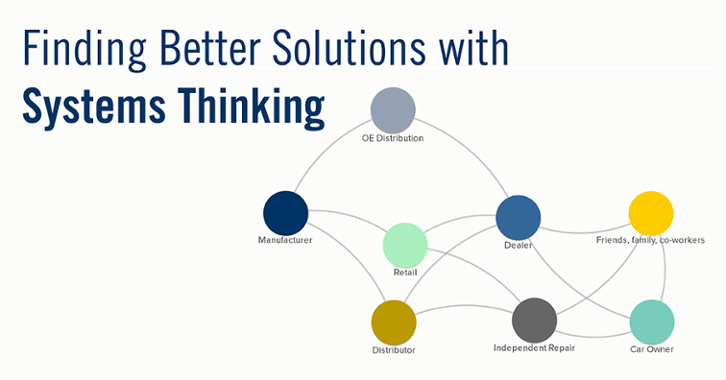
SYSTEMS THINKING BRINGS NEW MEANING TO PROBLEM SOLVING
Before students in the Master of Arts in Liberal and Interdisciplinary Studies (MLIS) Systems Thinking course can evaluate problems, they must first shift their thinking to patterns. Students learn to stop breaking down problems into parts and recognize that everything is actually a system.
WHAT IS SYSTEMS THINKING?
The online Systems Thinking course looks at the interaction of all the parts that work together as a complete unit. For example, a family has a teenager who seeks counseling. Mapping out the patterns would show the problem isn’t just one family member. It’s the relational web that’s the problem. If it’s weak or strained, communication breaks down and the family system suffers.
SOLVING REAL-WORLD PROBLEMS WITH SYSTEMS THINKING
Students in the course apply system theory to real-world problems they are dealing with in their own lives.
“They’re each bringing their own real world into it,” says Dr. Courtney Harrington, instructional designer for the course. Student projects have ranged from planning a wedding to fixing a dangerous crosswalk to work-related issues. “It allows students to learn in their context.”
Walter Salek, a senior director of continuous improvement at Plano Synergy from Elmhurst, Ill., completed the Systems Thinking course while working for the Automotive Aftermarket division of Bosch, an automotive supplier.
He examined the decision process for selecting repair parts.
“I was curious as to why our parts were selected or not selected for a repair,” he says.
LEARNING TO SEE RELATIONSHIPS
For the course project, students map the patterns of the relationship they are addressing, revealing weaknesses and strengths.
Seeing the map allows students to look for places of potential change within the whole system and make recommendations. Salek’s results showed the factors that influence the purchase decision.
TAKING SYSTEMS THINKING INTO THE FIELD
Salek says he received feedback from other students and the professor throughout his project. Weekly readings, assignments, and discussion forums helped the online students build on their projects each week.
“At Bosch, the results of the project raised more strategic questions and that we had put too much focus on the retailers and not enough on influencing the person who is making the purchase decision,” he says.
Salek now applies the skills he learned in the course to his position at Plano Synergy. The company is trying to increase employee retention rates in one of its plants.
“It’s helped us to prioritize the changes we’re making to our work system,” he says. “Wages are a simple answer, and taking a systems-thinking approach helped us to identify additional factors where we can make changes.”